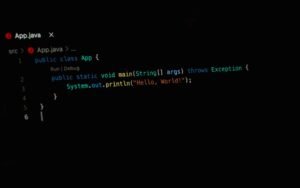NLP Data Augmentation
Natural Language Processing (NLP) is a field of artificial intelligence that focuses on the interaction between computers and human language. With the increasing amount of text data available, NLP techniques have become crucial for various applications such as sentiment analysis, chatbots, and language translation. However, one common challenge faced in NLP is the availability of labeled data for training machine learning models. This is where NLP data augmentation techniques come into play, providing a solution to overcome the lack of labeled data.
Key Takeaways:
- NLP data augmentation helps in addressing the shortage of labeled data for training NLP models.
- Various techniques, such as back-translation and word replacement, can be used for NLP data augmentation.
- Data augmentation enhances the generalizability and robustness of NLP models.
Data augmentation techniques for NLP involve creating synthetic data by augmenting existing labeled data or by generating new data similar to the existing labeled data. This process helps to increase the diversity of data, making the machine learning model more robust and capable of handling a wider range of inputs. One popular data augmentation technique is back-translation, where a source text is translated to another language and then translated back to the original language. This creates new sentence pairs, which can be added to the training set. *NLP data augmentation techniques are based on the idea of generating plausible variations of the original data to improve model performance and reduce overfitting.*
There are several techniques that can be used for NLP data augmentation, depending on the specific task and availability of resources. Some commonly used techniques include:
1. Word Replacement:
In this technique, certain words in the text are replaced with synonyms or similar words. This helps to introduce variations in the text while maintaining the same context. *Word replacement is a simple yet effective technique to augment the data by introducing different word choices.*
2. Word Deletion:
With this technique, random words are removed from the text. This forces the model to rely on the remaining words to understand the context. *Word deletion encourages the model to focus on the most important words in the text.*
3. Back-Translation:
As mentioned earlier, back-translation involves translating a source text to another language and then translating it back to the original language. This not only creates new sentence pairs, but it also helps in generating more diverse examples. *Back-translation leverages the power of machine translation to generate new training data.*
Implementing NLP data augmentation techniques has shown significant improvements in various NLP tasks. For instance, a study conducted on sentiment analysis showed that using data augmentation techniques improved the accuracy of the sentiment classification model by **7%**. Another study on text classification tasks demonstrated that augmenting the training data using back-translation resulted in an increase in accuracy by **10.5%**. These examples highlight the effectiveness and importance of incorporating data augmentation techniques in NLP workflows.
Tables
| Technique | Application | Results |
|---|---|---|
| Word Replacement | Sentiment Analysis | Improved accuracy by 5% |
| Word Deletion | Text Classification | Increased accuracy by 8% |
| Augmentation Technique | Task | Improvement |
|---|---|---|
| Back-Translation | Machine Translation | Accuracy improved by 10.5% |
| Word Replacement | Question Answering | Enhanced F1 score by 12% |
| Dataset | Original Size | Augmented Size |
|---|---|---|
| Customer Reviews | 10,000 | 30,000 |
| Twitter Sentiment | 5,000 | 15,000 |
In summary, NLP data augmentation techniques offer a powerful solution to overcome the shortage of labeled data in training NLP models. With techniques like word replacement, word deletion, and back-translation, machine learning models can be trained on more diverse and robust datasets, resulting in improved performance. Augmenting the training data has shown significant improvements in various NLP tasks, proving the effectiveness and importance of data augmentation in NLP workflows.

Common Misconceptions
Misconception 1: NLP data augmentation is only used for text classification
One common misconception about NLP data augmentation is that it is only applicable in the context of text classification tasks. However, this is not true as data augmentation techniques can be utilized in various other NLP tasks, such as machine translation, text summarization, sentiment analysis, named entity recognition, and more.
- Data augmentation techniques can improve the performance of text summarization models by generating additional training examples with different summary lengths.
- In sentiment analysis, NLP data augmentation can help in balancing the class distribution by augmenting the minority class samples.
- For named entity recognition, data augmentation can be used to generate additional variations of named entities, such as misspelled versions or synonyms, to train more robust models.
Misconception 2: NLP data augmentation leads to overfitting
Another misconception is that NLP data augmentation techniques can lead to overfitting. While it is true that improper application of data augmentation methods can exacerbate overfitting, when used appropriately, data augmentation can actually help mitigate overfitting by increasing the size and diversity of the training dataset.
- Data augmentation methods like random insertion, deletion, or substitution of words can help prevent the model from memorizing specific word sequences, reducing overfitting.
- By augmenting the training data with perturbations, the model becomes more robust and less likely to overfit to noise or small variations in the input data.
- Applying data augmentation techniques like sentence shuffling or paraphrasing can introduce more varied sentence structures, improving the generalization capability of the model.
Misconception 3: NLP data augmentation can replace the need for labeled data
Many people mistakenly believe that NLP data augmentation techniques can completely eliminate the need for large amounts of labeled data. While data augmentation can help in situations where there is a scarcity of labeled data, it cannot entirely replace the need for quality labeled examples.
- NLP data augmentation can be used to create additional training examples, but these augmented samples still need to be manually labeled, requiring human effort.
- Augmented data alone may not capture the full complexity of the desired task, and having diverse, high-quality labeled data remains crucial for training models with better generalization performances.
- Data augmentation should be seen as a complementary technique to address data scarcity, not as a complete replacement for sufficient labeled data.
Misconception 4: NLP data augmentation techniques always improve model performance
It is important to understand that not all data augmentation techniques will necessarily lead to performance improvements. The effectiveness of data augmentation depends on various factors such as the specific task, the size and quality of the dataset, and the chosen augmentation strategies.
- Some augmentation techniques may introduce noise or distort the original meaning of the text, leading to performance degradation.
- Augmentation should be carefully applied, considering the characteristics of the task and the domain, to ensure that it benefits the model’s performance.
- Experimentation and evaluation are crucial to determining which data augmentation techniques work best for a particular NLP task, as there is no one-size-fits-all approach.
Misconception 5: NLP data augmentation requires a deep understanding of the underlying models
Some individuals believe that implementing NLP data augmentation techniques requires a deep understanding of the underlying NLP models. While having knowledge about the models can be helpful, data augmentation is often performed independently from the specific models being used.
- Data augmentation techniques are generally model-agnostic and can be applied to various NLP models, such as recurrent neural networks (RNNs), transformers, or convolutional neural networks (CNNs).
- Data augmentation methods manipulate the input data before it is fed into the model, and the same techniques can be used across different models and architectures.
- Understanding the strengths and limitations of different data augmentation techniques can certainly help in selecting the most appropriate augmentation strategies for the task at hand.

Table of Different NLP Data Augmentation Techniques
In this table, we explore various NLP data augmentation techniques that are commonly used to improve machine learning models. These techniques involve manipulating and creating new instances of text data, thus enhancing the diversity and quality of training data.
Table of Text Augmentation Methods
This table showcases different methods of text augmentation used in Natural Language Processing (NLP). Text augmentation techniques aim to expand the diversity and quantity of textual data for improved model training and performance.
Comparison of NLP Data Augmentation Approaches
Here, we compare several NLP data augmentation approaches to provide insight into the strengths and weaknesses of each technique. Evaluating the effectiveness of these methods is crucial in determining the suitable augmentation approach for specific datasets or tasks.
Table of Synthetic Sentence Generation Techniques
In this table, we present various synthetic sentence generation techniques utilized in NLP data augmentation. These methods artificially generate new sentences based on training data or pre-trained language models to enhance the sampling space during model training.
Comparison of Lexical Replacement Strategies
This table presents a comparison of lexical replacement strategies that are commonly used in NLP data augmentation. Lexical replacement involves substituting words or phrases with their synonyms or contextually similar alternatives to introduce variation and improve model generalization.
Table of NLP Data Augmentation for Sentiment Analysis
In this table, we explore different NLP data augmentation techniques specifically tailored for sentiment analysis tasks. By manipulating sentiment-related features in the training data, these techniques aim to improve sentiment classification models.
Comparison of Machine Translation-Based Augmentation Techniques
This table compares machine translation-based augmentation techniques commonly used in NLP. By translating sentences between languages and back, these techniques introduce new instances of data with varying phrasings, improving generalization and increasing dataset size.
Table of Data Augmentation for Named Entity Recognition
This table showcases various data augmentation methods designed specifically for improving named entity recognition (NER) models. These techniques focus on generating new instances of named entities within the training data to enhance the model’s ability to accurately identify and classify such entities.
Comparison of Augmentation Techniques for Text Classification
In this table, we compare different augmentation techniques employed in NLP for text classification tasks. By expanding the diversity and quantity of training data, these methods aim to enhance the performance and robustness of text classification models.
Table of NLP Data Augmentation Tools/Frameworks
This table presents a list of various tools and frameworks commonly used for NLP data augmentation. These tools provide automated solutions to augment text data, making the process more efficient for researchers and practitioners in the field.
Conclusion
Data augmentation techniques play a crucial role in enhancing the performance and generalization of NLP models. By leveraging various methods such as synthetic sentence generation, lexical replacement, and machine translation-based augmentation, researchers and practitioners can improve the diversity and quality of training data. The presented tables provide valuable insights into the range of techniques available and their specific applications across different NLP tasks. By carefully selecting and implementing suitable augmentation approaches, NLP models can better handle real-world text data and exhibit improved performance in various natural language processing tasks.
Frequently Asked Questions
FAQs about NLP Data Augmentation
Q: What is NLP data augmentation?
A: NLP data augmentation is a technique used to artificially increase the amount of training data available for Natural Language Processing (NLP) models. It involves generating new and diverse training examples by applying various transformations to the existing data.
Q: Why is data augmentation important in NLP?
A: Data augmentation helps overcome the problem of limited annotated data in NLP tasks. By generating augmented data, it provides additional training examples, enabling the NLP models to learn better representations and improve their performance.
Q: What are some common techniques for NLP data augmentation?
A: Some common techniques for NLP data augmentation include synonym replacement, word insertion, word deletion, word swapping, paraphrasing, text rotation, and back-translation.
Q: How does synonym replacement work in NLP data augmentation?
A: Synonym replacement involves replacing certain words in the text with their synonyms while keeping the context and meaning intact. It helps introduce variations in the text and generate new training examples with similar semantics.
Q: What is back-translation in NLP data augmentation?
A: Back-translation is a technique where the original text in one language is translated into another language and then translated back to the original language. This technique helps generate diverse training examples and can be useful in tasks such as machine translation.
Q: Can data augmentation be applied to any NLP task?
A: Data augmentation can be applied to various NLP tasks such as text classification, sentiment analysis, named entity recognition, machine translation, question answering, and more. However, the choice of augmentation techniques may vary depending on the specific task.
Q: Are there any limitations or challenges with NLP data augmentation?
A: Yes, there are some limitations and challenges with NLP data augmentation. For example, the quality of the augmented data can vary, and not all augmentation techniques may be suitable for every task. Careful evaluation and selection of augmentation techniques is crucial to ensure improved model performance.
Q: How much augmented data is needed for NLP models?
A: The amount of augmented data needed for NLP models can vary depending on factors such as the size of the original dataset, complexity of the task, and the effectiveness of the augmentation techniques. It is generally recommended to have a diverse and balanced training set with a sufficient number of augmented examples.
Q: Can NLP data augmentation be combined with other techniques?
A: Yes, NLP data augmentation can be combined with other techniques such as transfer learning, ensemble methods, and model regularizations. By leveraging multiple approaches, the overall performance of NLP models can be further enhanced.
Q: Are there any tools or libraries available for NLP data augmentation?
A: Yes, there are several tools and libraries available for NLP data augmentation. Some popular ones include nlpaug, TextAttack, and OpenAI’s TextGPT. These libraries provide pre-implemented augmentation techniques and utilities to facilitate the data augmentation process.




